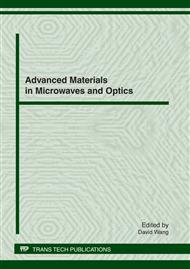p.696
p.701
p.709
p.716
p.722
p.729
p.736
p.743
p.748
Incremental Study Based on Support Vector Used to Anomaly Detection for Hyperspectral Imagery
Abstract:
While detecting anomalies in hyperspectral imagery with support vector data description (SVDD), large numbers of operation was run because of the high dimension character of dataset and the complexity of background and the high miss rate was discovered because of the interfered background by interior anomalies. This paper used incremental support vector data description (ISVDD) method that samples are divided many sub-sample, and incremental study is designed to simplify the computation. On every sub-sample study, optimization is needed according of the support vectors obtained from above sub-sample and current sub-sample data. By the experiment on the HYMAP data, computation complexity of the algorithm decrease obviously and the computation speed increase highly under the similar detection effect compared with SVDD algorithm.
Info:
Periodical:
Pages:
722-728
Citation:
Online since:
January 2012
Authors:
Price:
Сopyright:
© 2012 Trans Tech Publications Ltd. All Rights Reserved
Share:
Citation:


